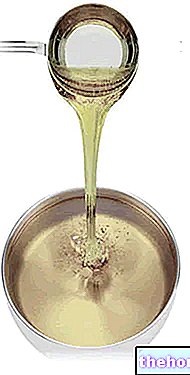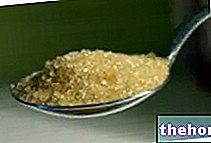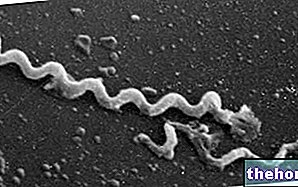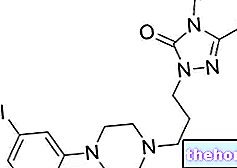Industrial production of Xylitol
Xylitol is a polyol with 5 carbon atoms, with a sweetness similar to that of sucrose (polyols, or polyalcohols, are carbohydrates with a molecule similar to monosaccharides, but with a hydroxyl function instead of aldehyde or ketone).

On a commercial scale it is produced by chemical conversion of xylan. Sources of xylan are birch wood and other hardwoods, almond shells and by-products of paper production. The xylane content in these materials can vary considerably along with the presence of by-products (poly or oligosaccharides) that need to be removed during manufacturing processes. The commercial synthesis of xylitol includes 4 steps:
- disintegration of xylan-rich materials and hydrolysis of xylan into xylose
- isolation of xylose from the hydrolyzate, by means of chromatographic processes, to obtain solutions containing pure xylose
- xylose is hydrogenated to xylitol in the presence of nickel-based catalysts
- crystallization of xylitol.
Steps 2) and 3) can be reversed.
Although enzymatic processes can in principle be employed, these procedures are not used for synthesis on a commercial scale. Other synthetic approaches are known in the literature, but have a purely scientific interest
C5H12O5
White crystalline powder
92-96 ° C
169g / 100ml H2O
pH IN 100 g / l H2O
Same as sucrose
Stable at 120 ° C, it does not caramelize unless it is heated to boiling temperature for a few minutes
Xylitol as a Sweetener
Currently xylitol is used as a sweetener in many non-cariogenic sweets (chewing gum, chocolate, gummy candies) and less frequently in diet foods (eg.diabetic products), in pharmaceutical preparations (throat lozenges, multivitamin tablets, cough syrups) and in cosmetics (toothpaste and mouthwash). In a small percentage, it is also added to drinks to improve the taste of the product and the sweetness profile; on the label it can hide behind the code E967.
Theoretically, xylitol can also be used in baked goods. However, if crust and brownish color formation and caramelization are required, a reducing sugar must be added. Moreover, xylitol inhibits the growth and fermentation activity of yeasts, so its presence is not appropriate in products that require natural yeasts for leavening.

The dissolution of polyols in water is an endothermic process (it absorbs heat), which involves a cooling of the solution higher than that provided by sucrose. This organoleptic property, which translates into a sensation of freshness in the oral cavity, is widely exploited for the production of chewing-gum. The cooling effect, in particular, enhances the perception of the mint aroma.
The cooling effect is obviously not felt if xylitol is already dissolved in the product in which it is contained (toothpaste, mouthwashes) or exists in an amorphous form (gelatins in general).

Xylitol metabolism and nutritional properties
All polyols are slowly absorbed by the intestine, as their transport through the mucosa is not facilitated by a specific transport system. Therefore, after the ingestion of large quantities of xylitol only a small part is absorbed and conveyed into the enteropathic system. (through the portal vein). Most of the xylitol ingested reaches the distal part of the digestive tract, where it undergoes the fermentation process by the local bacterial flora. The fermentation products are short or volatile fatty acids (acetates, propionates, butyrates), as well as small quantities of gas (H2, CH4, CO2). Fatty acids are sequestered by the liver and used in the mitochondria for the production of acetyl-CoA and propionyl-Co-A.
For xylitol and other polyols a calorific value of about 2.8-2.9 kcal / g has been estimated. This value derives from the consideration that only about ¼ of the totally ingested xylitol is absorbed in the intestinal tract. This portion, then metabolized by the glucuronate-pentose phosphate "shunt", provides 4 kcal / mol. The unabsorbed ¾ are almost totally fermented by the intestinal flora. It has been estimated that 42% of the energy supplied by unabsorbed xylitol is consumed for the metabolism and growth of bacteria, while about 58% of the energy remains available for the organism. In light of these considerations, the European community has set the caloric value of xylitol and other polyols at 2.4 kcal / g on an interim basis.
The results of tests conducted on animals (rats, cats, dogs) for the evaluation of the toxicity of xylitol, showed a very low toxicity, regardless of the route of administration and manifested only at high doses. Furthermore, xylitol is not mutagenic and is acaryogenic (it does not cause tooth decay).
Tolerance to high doses of xylitol has been investigated in numerous studies on diabetic volunteers. The results of these studies demonstrated good tolerance even at high doses. No changes in clinical parameters were observed. The only side effect is a transient laxative effect, especially if xylitol is associated with slow digestible carbohydrates.
See also: Xylitol in cosmetics
Other Foods - Sweeteners Acesulfame K Aspartame Sugar beet Sugar cane Sodium cyclamate Dextrose Sweeteners Erythritol Fructose Maltose Mannitol Molasses Saccharin Saccharose Maple syrup Agave syrup Fructose syrup Glucose syrup Sugar sorbitol Articles Stevia Sucralitol sugar SWEETENERS Categories Alcoholic Foods Meat Cereals and derivatives Sweeteners Sweets Offal Fruit Dried fruit Milk and Legumes Oils and Fats Fish and fishery products Salami Spices Vegetables Health recipes Appetizers Bread, Pizza and Brioche First courses Second courses Vegetables and Salads Sweets and Desserts Ice cream and sorbets Syrups, liqueurs and grappas Basic Preparations ---- In the Kitchen with leftovers Carnival recipes Christmas recipes Light diet recipes tici Recipes for the Holidays Recipes for Valentine's Day Vegetarian Recipes Protein Recipes Regional Recipes Vegan Recipes



























